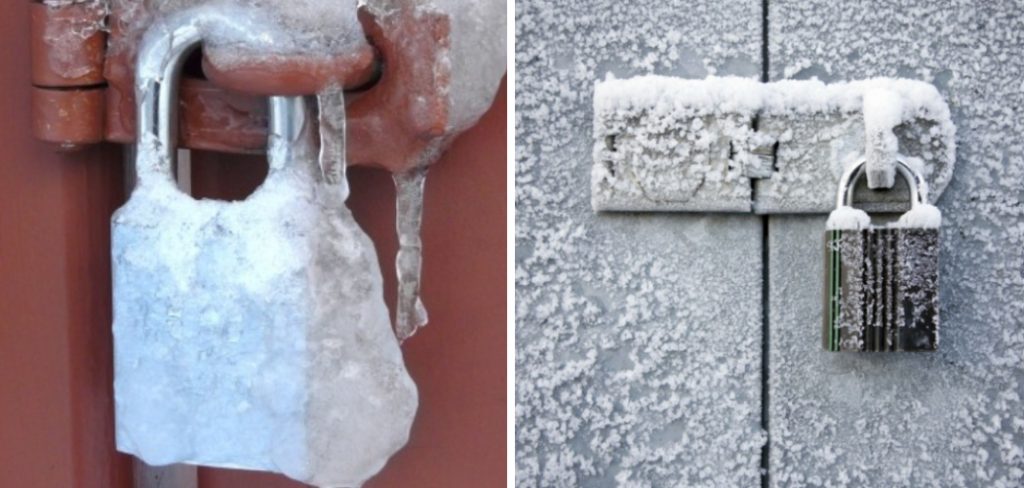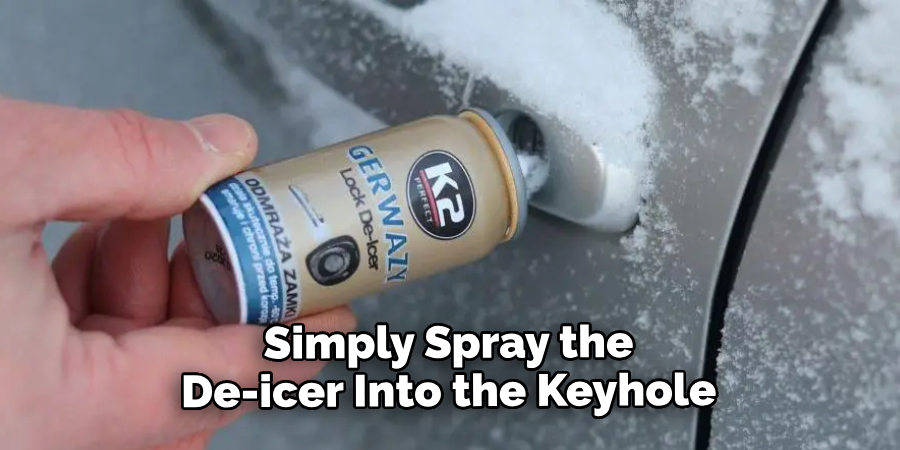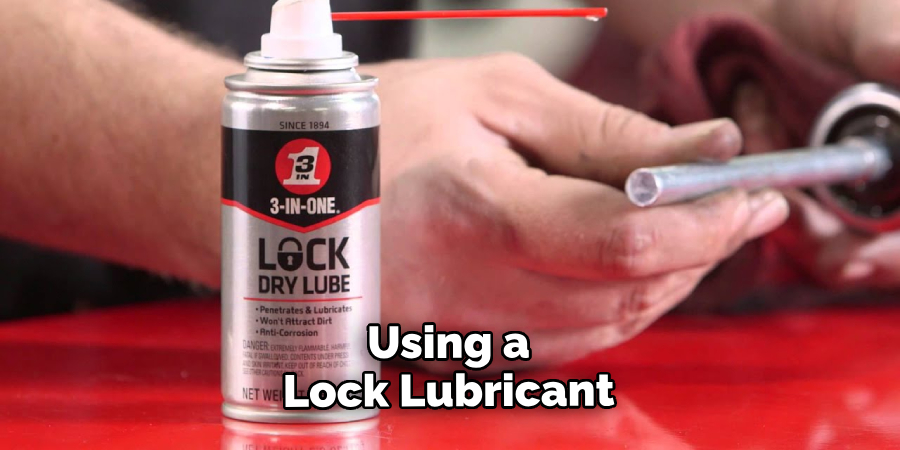Are you stuck with a frozen padlock and don’t know what to do? Don’t worry, dealing with a frozen padlock can be tricky, but if you take the right precautions and have some patience, it is entirely possible to get your lock open. In this blog post, we will show you exactly how to open a frozen padlock in no time! We’ll cover why these locks become frozen in the first place, as well as provide step-by-step instructions on how to open frozen padlock!

With just the right amount of patience and the right tools, even a frozen padlock can be opened. In this blog post, I’m going to walk you through some helpful tips on unlocking those stubborn locks so that accessing whatever treasure lies beneath them will come quickly and easily! So if you’re looking for guidance on opening your own frozen lock, read on – we’ve got everything covered from what tools to use to techniques and more.
Why May You Want to Open Frozen Padlock?
1 . To Access Your Property
If you are a homeowner, there is a possibility that your padlock may get frozen due to extreme weather conditions. This can prevent you from accessing your own property or vehicle. In such situations, knowing how to open a frozen padlock can be extremely helpful.
2 . To Prevent Physical Damage
When a padlock gets frozen, the tendency for many people is to forcefully open it. This can lead to the padlock getting damaged physically, causing you more inconvenience in the long run. Learning how to safely open a frozen padlock can prevent unnecessary damage and save you money.
3 . To Save Time
If you’re running late for work or an important event, discovering that your padlock is frozen can be frustrating. Knowing to open a frozen padlock quickly can save you from being late and causing unnecessary stress.
4 . To Be Prepared for Emergencies
In cases of emergencies, where you need immediate access to your property or vehicle, knowing how to open a frozen padlock can be crucial. It can help you avoid delays and potentially dangerous situations.
5 . To Help Others
You never know when someone may need your help with opening a frozen padlock. Knowing how to do it can not only save them time and inconvenience but also make you a helpful and reliable person in their eyes.
10 Ideas On How to Open Frozen Padlock
Now that we have established why learning how to open a frozen padlock is important, let’s discuss the actual steps involved in doing so.
1 . Use De-Icer
The easiest and most common way to open a frozen padlock is by using a de-icer. This can be purchased at any hardware store or gas station. Simply spray the de-icer into the keyhole and wait a few minutes for it to melt the ice. Also, be sure to use a de-icer that is safe for use on metal surfaces.

2. Use a Hairdryer
If you don’t have access to a de-icer, a hairdryer can also do the trick. Point the hot air directly into the keyhole and wait for the ice to melt. Be careful not to hold the hairdryer too close to the lock as it may cause damage.
3. Use a Lighter
If you’re in a pinch and don’t have access to either a de-icer or a hairdryer, a lighter can also help melt the ice in the keyhole. Hold the flame near the keyhole for a few seconds and then try inserting your key again.
4. Use Hot Water
Another household item that can be used to melt ice is hot water. Boil some water and pour it into a cup or container. Then, carefully pour the hot water onto the keyhole and wait for the ice to melt. Also, you have to make sure that the keyhole is not too hot to touch before you insert the key.
5. Use Rubbing Alcohol
Rubbing alcohol can also be used to open a frozen padlock. Pour some rubbing alcohol into the keyhole and wait for it to melt the ice. Remember to use caution as rubbing alcohol is flammable. This will also help prevent the lock from refreezing.
6. Use a Lock Lubricant
If you have tried all the methods above and the padlock is still frozen, try using a lock lubricant. This can be purchased at most hardware stores. Simply spray or drip some of the lubricant into the keyhole and wait for it to penetrate and loosen up the frozen lock.

7. Use Petroleum Jelly
In a pinch, petroleum jelly can also be used to open a frozen padlock. Apply a small amount of the jelly onto your key and then insert it into the keyhole. The lubricating properties of the jelly should help loosen up the ice.
8. Use WD-40
WD-40 is a household lubricant that can also be used to open a frozen padlock. Spray some onto your key and then insert it into the keyhole. The lubricant will help melt the ice and also prevent future freezing.
9. Use a Heat Source
If you’re outdoors and don’t have access to any of the above items, try using body heat or a warm object to melt the ice in the keyhole. You can also use a hand warmer or heat pack to warm up the lock and make it easier to open.
10. Prevent Freezing
The best way to avoid dealing with a frozen padlock is to prevent it from happening in the first place. Try using a silicone-based lubricant on your lock before winter or keep your padlock covered to protect it from the elements. You can also try using a lock de-icer on a regular basis to prevent any ice buildup.
With these tips in mind, you’ll be able to easily open a frozen padlock and save yourself from potential frustration and inconvenience. Remember, always use caution when trying to melt ice near a lock as it can cause damage. Stay prepared and try to prevent freezing from happening in the first place. So, next time you encounter a frozen padlock, you’ll know exactly what to do! Happy unlocking!
Frequently Asked Question
What Precautions Should I Take Before Trying to Open a Frozen Padlock?
Before attempting to open a frozen padlock, it is important to take certain precautions to avoid causing damage or injury. Some tips to keep in mind are:
- Always wear gloves and protective eyewear
- Use the appropriate tools for the job (e.g. de-icing solution, heat source)
- Avoid using excessive force, as this can damage the lock or cause injury
- Make sure to have a backup key in case the lock becomes damaged during the opening process

How Do I Know if My Padlock is Frozen?
There are a few signs that indicate your padlock may be frozen:
- The key will not turn in the lock
- There is visible ice or frost on the lock
- The lock feels cold to the touch
If you are unsure, try using a lubricant or de-icing solution to see if it resolves the issue.
Can I Use a Hair Dryer to Thaw a Frozen Padlock?
Yes, a hair dryer can be used to thaw a frozen padlock. However, make sure to use caution and keep the hair dryer at least 6 inches away from the lock to avoid any damage.
How Do I Prevent My Padlock from Freezing in the Future?
To prevent your padlock from freezing, try the following tips:
- Keep it lubricated with graphite or silicone spray
- Store it in a dry place, away from moisture and extreme temperatures
- Use a cover or insulation when using the lock outdoors in cold weather
What if My Padlock is Still Frozen After Trying These Methods?
If your padlock is still frozen after trying these methods, it may be best to seek the help of a professional locksmith. They have the necessary tools and expertise to safely open a frozen padlock without causing damage. Additionally, they may be able to offer advice on how to prevent your lock from freezing in the future.

Remember, safety should always come first when dealing with frozen locks, so do not hesitate to seek professional assistance if needed. Overall, with proper precautions and techniques, you can successfully open a frozen padlock and keep it functioning properly in the future. Remember to always use caution when attempting to open a frozen padlock and never force it open as this could cause damage or injury.
By following these tips, you can save time and frustration when dealing with a frozen padlock. Stay safe and keep your padlock functioning smoothly by taking preventative measures to prevent it from freezing in the first place.
Conclusion
In conclusion, opening a frozen padlock can be a very daunting and tricky task. Each of the methods described above could work for you depending on the situation, it’s just important to keep safety in mind as you go. If nothing else works out for you then don’t hesitate to call a locksmith or take your lock to the store where it was purchased from.
Most importantly, make sure that you invest in quality locks which are designed for cold weather conditions and learn how to maintain them properly. Now that you know how to open frozen padlock, go forth and get that door or cabinet opened – without compromising on safety!
About
Safety Fic is a distinguished figure in the world of Diy design, with a decade of expertise creating innovative and sustainable Diy solutions. His professional focus lies in merging traditional craftsmanship with modern manufacturing techniques, fostering designs that are both practical and environmentally conscious. As the author of diy, Safety Fic delves into the art and science of Safety Fic-making, inspiring artisans and industry professionals alike.
Education RMIT University
(Melbourne, Australia) Associate Degree in Design (Safety Fic) Focus on sustainable design, industry-driven projects, and practical craftsmanship. Gained hands-on experience with traditional and digital manufacturing tools, such as CAD and CNC software.
Nottingham Trent University
(United Kingdom) Bachelor’s in diyfastly.com and Product Design (Honors) Specialized in product design with a focus on blending creativity with production techniques. Participated in industry projects, working with companies like John Lewis and Vitsoe to gain real-world insights.
Publications and Impact
In diy, Safety Fic his insights on indoor design processes, materials, and strategies for efficient production. His writing bridges the gap between artisan knowledge and modern industry needs, making it a must-read for both budding designers and seasoned professionals.
